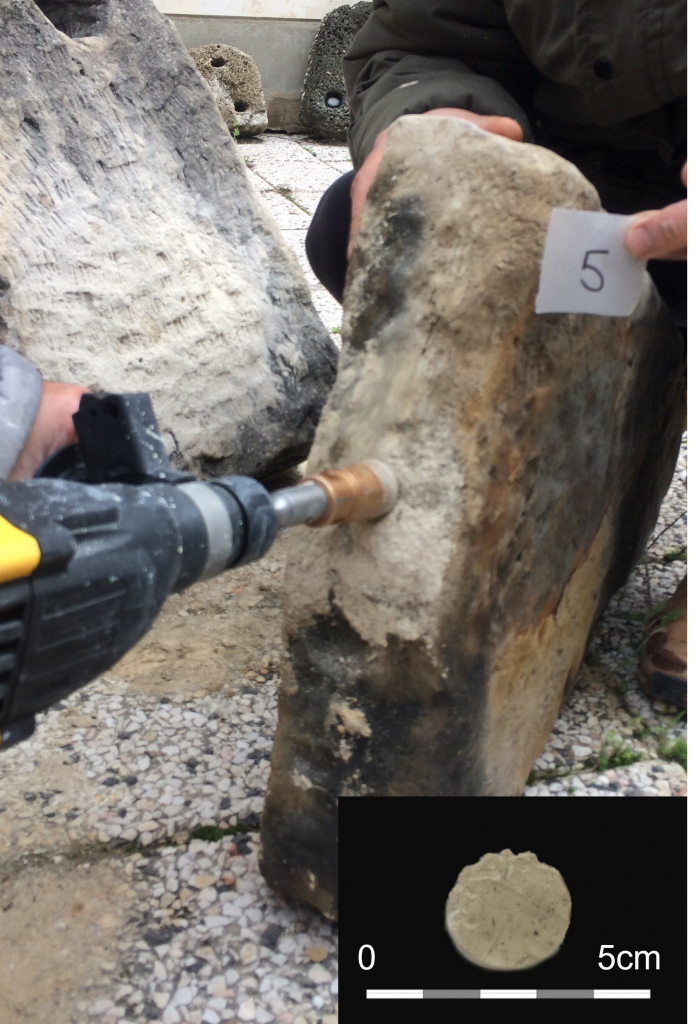A paper lead by Sara Macke, one of our students at the School of Archaeology and Maritime Civilizations, was just published in the Journal of Archaeological Science: Reports.
Many stone anchors from the Bronze Age period have been found throughout the Eastern Mediterranean. Previous research found that most stone anchors of the Middle Bronze Age (a.k.a. Byblian type) and of the Late Bronze Age (a.k.a. Uluburun type) were made from carbonate rocks and aeolianites (kurkar, in Hebrew; quartz sand cemented by calcite). These rocks are common along the Eastern Mediterranean coasts and cannot be easily distinguished into quarry sites on a micro-regional scale. While previous research utilized rock petrography to propose provenance of such anchors, we present a multi-disciplinary methodology that utilizes several lines of mineralogical and geochemical evidence. In this study, we report on preliminary results obtained from mineralogical, isotopic, and petrographic analyses conducted on 17 Bronze Age stone anchors from well-dated underwater assemblages found along the Carmel coast, northern Israel, as well as on an initial rock reference collection of carbonate rocks, kurkar, and beachrock outcrops from various coastal regions of Israel. Comparing the data of the reference rocks with stone anchors we show that all carbonate rock anchors were prepared from chalky limestone (rather than limestone or dolomite), with high likelihood that nine out of the 12 such anchors were produced from the Arqan Formation chalky limestone, from the Carmel ridge. One carbonate rock anchor may originate from a geological formation we have either not sampled along the Israeli coast or from a foreign origin. Other stone anchors were produced from kurkar or beachrock. Our findings suggest that these were produced from rocks from the Carmel coast and further north. We also identify-two procurement strategies for stone anchors: either as a unified set from a production center, or mixed and matched from different rock types and sources. This pilot study opens the possibility to analyze stone anchor provenance in the Eastern Mediterranean in more detail than before. Future research to enlarge the rock reference collection beyond the Israeli coast will provide further archaeological and anthropological insight into maritime activity during the Bronze Age.
Click here to access the full paper!


